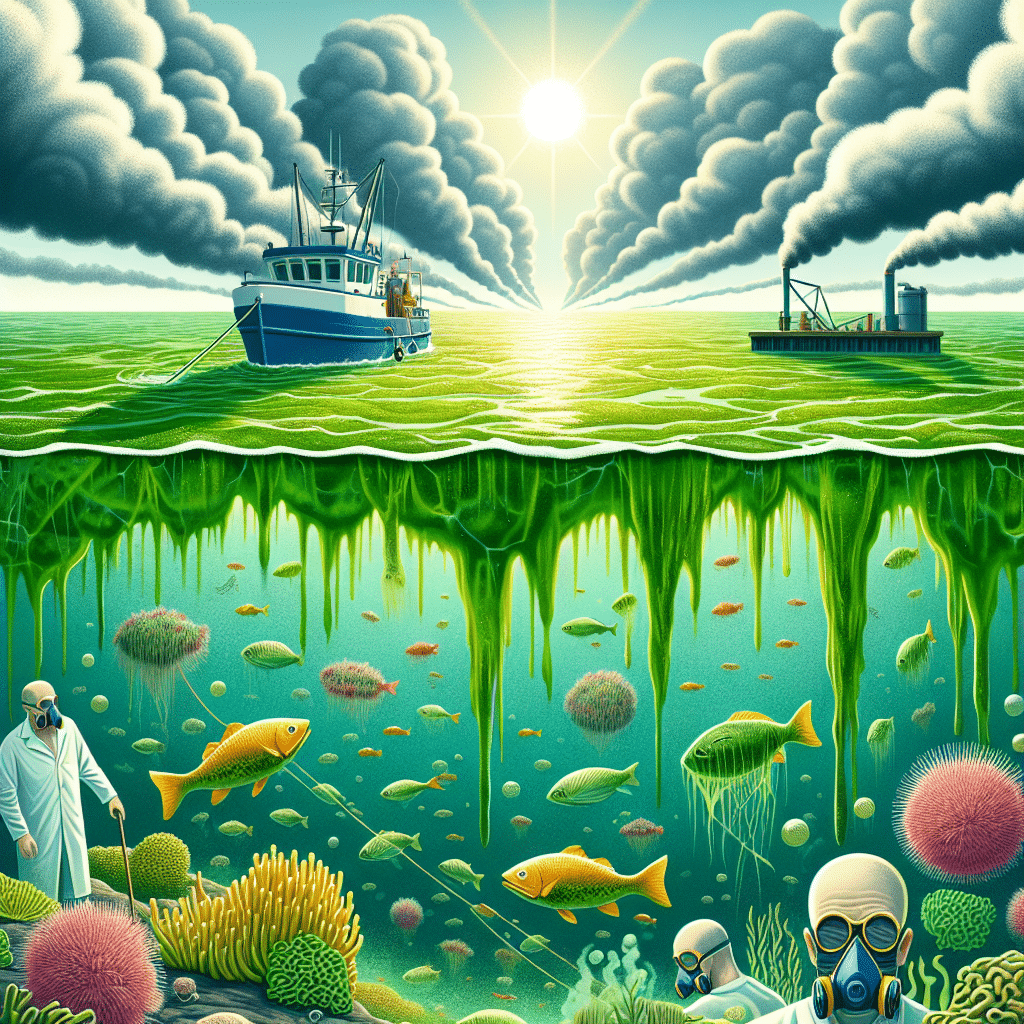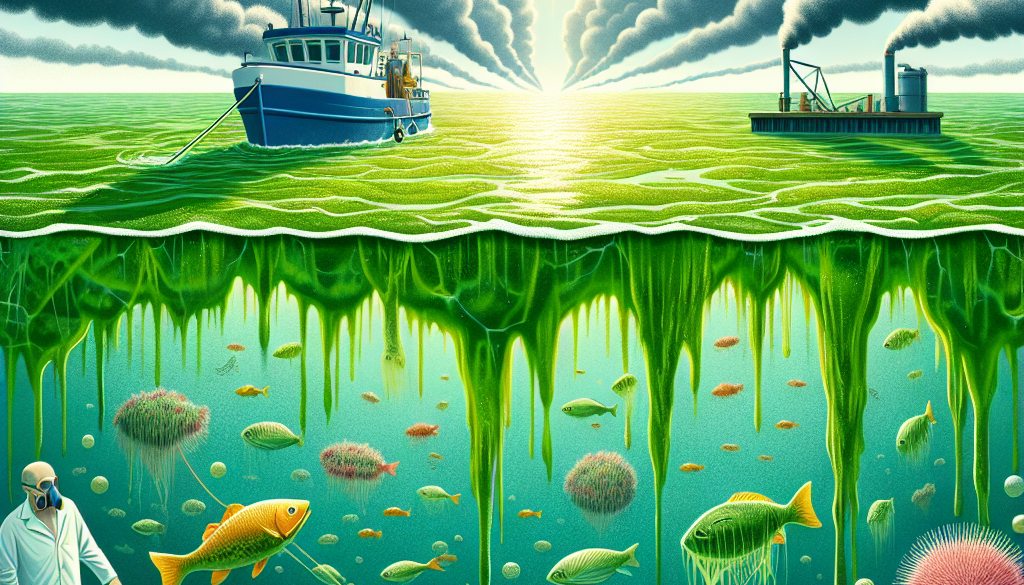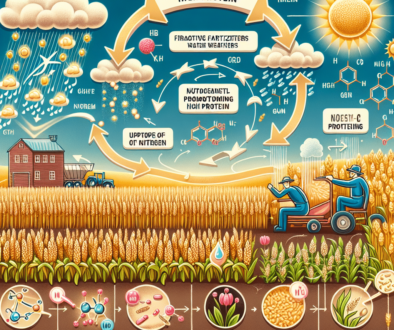What Are The Dangers Of Algae?
-
Table of Contents
- The Hidden Threats of Algae: Understanding the Risks
- The Environmental Impact of Harmful Algal Blooms
- Human Health Hazards Linked to Toxic Algae
- Economic Consequences of Algal Overgrowth
- Algae and Climate Change: A Growing Concern
- Strategies for Mitigating Algal Dangers
- Conclusion: The Need for Vigilance and Action
- Enhance Your Health with ETprotein’s High-Quality Protein Products
The Hidden Threats of Algae: Understanding the Risks

Algae are often seen as harmless, even beneficial components of aquatic ecosystems, playing a crucial role in the balance of marine and freshwater habitats. However, under certain conditions, algae can pose significant dangers to the environment, wildlife, and human health. This article delves into the various risks associated with algae, supported by examples, case studies, and statistics, to provide a comprehensive understanding of the potential threats they can pose.
The Environmental Impact of Harmful Algal Blooms
One of the most visible dangers of algae is the occurrence of harmful algal blooms (HABs). These blooms can have devastating effects on aquatic ecosystems, leading to:
- Depletion of oxygen in the water, causing massive fish kills.
- Disruption of food chains by outcompeting other organisms for nutrients and sunlight.
- Production of toxins that can kill marine mammals, birds, and other wildlife.
For example, the infamous “red tide” caused by the dinoflagellate Karenia brevis has been responsible for massive fish die-offs and the death of marine mammals like manatees in the Gulf of Mexico.
Human Health Hazards Linked to Toxic Algae
Algae can produce a variety of toxins that are harmful to humans. Exposure to these toxins can occur through direct contact with contaminated water, consumption of tainted seafood, or inhalation of aerosolized toxins. Health issues related to algal toxins include:
- Skin irritation and rashes from swimming in contaminated waters.
- Respiratory problems from inhaling airborne toxins.
- Neurological effects and liver damage from consuming contaminated shellfish.
A notable case is the presence of microcystins produced by cyanobacteria, which have been linked to acute and chronic illnesses in humans, including liver failure and cancer.
Economic Consequences of Algal Overgrowth
The proliferation of algae not only affects the environment and health but also has significant economic repercussions. Industries such as tourism, fishing, and aquaculture suffer losses due to:
- Beach closures and reduced recreational water use.
- Decreased fish populations affecting commercial fisheries.
- Contamination of aquaculture farms leading to loss of stock.
For instance, the tourism industry in Florida has faced economic challenges due to frequent red tide events, which deter visitors and impact local businesses.
Algae and Climate Change: A Growing Concern
Climate change is exacerbating the dangers of algae by creating conditions that favor the growth of harmful blooms. Rising temperatures, increased carbon dioxide levels, and altered precipitation patterns contribute to:
- Longer algal bloom seasons.
- Expansion of algal blooms to new areas.
- Increased frequency and intensity of blooms.
Research indicates that HABs are becoming more common in places like the Great Lakes due to warming waters, posing a threat to the region’s water quality and ecosystem health.
Strategies for Mitigating Algal Dangers
To combat the dangers of algae, a multi-faceted approach is necessary. Strategies include:
- Monitoring water bodies for early detection of harmful blooms.
- Implementing nutrient management practices to reduce the input of fertilizers into waterways.
- Developing and applying algaecides and other control methods cautiously to avoid further environmental harm.
Efforts such as the U.S. Environmental Protection Agency’s Cyanobacteria Assessment Network (CyAN) use satellite data to monitor freshwater systems for cyanobacterial blooms, aiding in timely responses to potential threats.
Conclusion: The Need for Vigilance and Action
The dangers of algae are multifaceted, affecting environmental, human, and economic health. As climate change continues to alter our planet’s ecosystems, the risks associated with harmful algal blooms are likely to increase. It is imperative that we remain vigilant and proactive in monitoring and managing these threats to safeguard our water resources and the well-being of all who depend on them.
Enhance Your Health with ETprotein’s High-Quality Protein Products
In light of the environmental concerns surrounding algae, it’s important to consider sustainable and safe sources of nutrition. ETprotein offers a range of high-quality protein products that are not only environmentally friendly but also cater to various dietary needs. Their organic bulk vegan proteins and L-(+)-Ergothioneine are ideal for those seeking non-GMO, allergen-free options with a neutral taste. Whether you’re involved in the nutraceutical, pharmaceutical, or food and beverage industries, ETprotein’s products are a reliable choice for enhancing your health and supporting your protein requirements.
About ETprotein:
ETprotein, a reputable protein and L-(+)-Ergothioneine (EGT) Chinese factory manufacturer and supplier, is renowned for producing, stocking, exporting, and delivering the highest quality organic bulk vegan proteins and L-(+)-Ergothioneine. They include Organic rice protein, clear rice protein, pea protein, clear pea protein, watermelon seed protein, pumpkin seed protein, sunflower seed protein, mung bean protein, peanut protein, and L-(+)-Ergothioneine EGT Pharmaceutical grade, L-(+)-Ergothioneine EGT food grade, L-(+)-Ergothioneine EGT cosmetic grade, L-(+)-Ergothioneine EGT reference grade and L-(+)-Ergothioneine EGT standard. Their offerings, characterized by a neutral taste, non-GMO, allergen-free attributes, with L-(+)-Ergothioneine purity over 98%, 99%, cater to a diverse range of industries. They serve nutraceutical, pharmaceutical, cosmeceutical, veterinary, as well as food and beverage finished product distributors, traders, and manufacturers across Europe, USA, Canada, Australia, Thailand, Japan, Korea, Brazil, and Chile, among others.
ETprotein specialization includes exporting and delivering tailor-made protein powder and finished nutritional supplements. Their extensive product range covers sectors like Food and Beverage, Sports Nutrition, Weight Management, Dietary Supplements, Health and Wellness Products, and Infant Formula, ensuring comprehensive solutions to meet all your protein needs.
As a trusted company by leading global food and beverage brands and Fortune 500 companies, ETprotein reinforces China’s reputation in the global arena. For more information or to sample their products, please contact them and email sales(at)ETprotein.com today.














